Now, armed with new knowledge, we can speculate on how the transport of ions through membranes leads to intelligence and consciousness. Nobody can give a correct, complete and clear answer yet, so we will look at the current situation with examples.
I want to remind you that this series of articles does not pretend to a detailed description of all the processes involved in the cognitive activity of the brain, but is descriptive in order to give interested people an idea of the principles of the brain, intelligence and consciousness.
And how is intelligence related to the activity of neurons?
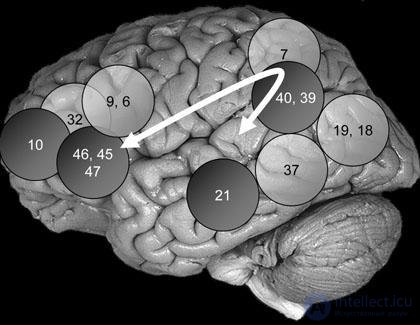
Fig. 1. Source: UC Irvine, CA
What is intelligence?
Wiki: Intellect (from lat. Intellectus - understanding, cognition) is the mind, mind, mental abilities: learn from experience, adapt, adapt to new situations, apply knowledge to manage the environment or think abstractly (from Encyclopedia Britannica). General ability to learn and solve problems, which combines all the cognitive abilities of an individual: sensation, perception, memory, representation, thinking, imagination (from the Dictionary of methodical terms).
The English Wikipedia gives a list of options for defining intelligence by various scientists and groups, among which the following are the most interesting:
philosophical:
- the general ability of the individual to purposeful action, rational thinking and effective interaction with the environment (David Wechsler).
- targeted adaptive behavior (Sternberg & Salter).
applied:
- The result of the processes of collecting, storing, accessing, combining, comparing, and using information and skills in new contexts (Lloyd Humphreys).
abstract:
- the ability to cope with cognitive complexity (Linda Gottfredson).
anthropocentric:
- the unique tendency of human beings to change the structure of their cognitive functions to better adapt to changing conditions of life situations (Reuven Feuerstein).
The American Psychological Association suggests the following definition (which, in my opinion, is most often found in articles):
“Individuals differ from one another in their ability to understand complex ideas, to effectively adapt to the environment, to learn from experience, to participate in various forms of reflection, to overcome difficulties by thinking” [1].
It turns out that there is no exact definition, but in order to start measuring something, you need to imagine something in detail, and it is even more difficult to do something that does not have a clear TK. Therefore, the general problem of intelligence is divided into subtasks and they are already trying to solve them, or to find the areas of the brain responsible for them. The most common method of studying the functions of any area of the brain is to find a person for whom it does not work (there was a stroke or damage) and see what is missing in its behavior. Then the results of many such studies are brought together and see what happened.
And it turns out, for example, that general intelligence (general intelligence is such a fictional measure based on the results of people’s testing) is not concentrated in any one area of the brain, but is quite distributed among different areas and connections between them and “depends on the work of the whole brain "[2]. This, in turn, leads us to the conclusion that the ability of the brain depends on how the brain can integrate fragmented information [2]. That confirms the theory put forward earlier [3] about the connection of the intellect with the ability of information to “travel” to different areas of the brain (Fig. 1). Thus, it is not enough to be able to manage attention, to work with memory and language, the whole thing should be effectively tied to each other.
However, it remains unclear whether there will be a strong AI (strong AI is the concept of AI, similar in capabilities to the human brain) if we take the modules of memory, attention, language, etc., and simply connect them. And how should they be connected in order for the very process of information integration to begin?
And what is the information from the point of view of the brain?
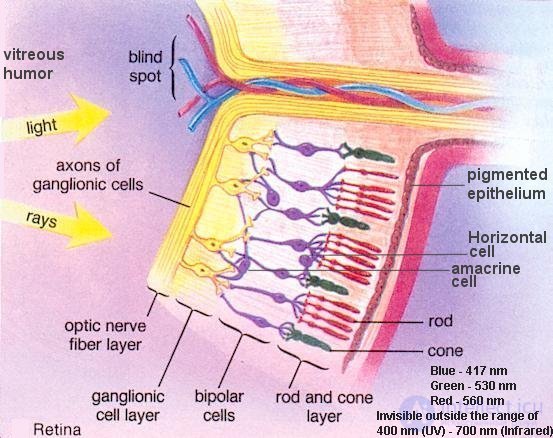
Fig. 2 Source: cidpusa.org
Take, for example, the eye. It has a retina on which the current image is projected. The retina consists of photosensitive cells (about 120 million tubules / rods and cones) connected to the optic nerve (through several layers of other neurons) in an interesting way (Figure 2): notice, first, the light must break through the nerve fibers, and then only register with photosensitive by cells. From such an organization follows the nature of the blind spot.
And what is transmitted through the optic nerve? And on it action potentials (AR), and as a series of impulses are already transferred. Moreover, it was noted that most cells have light with a “favorite” wavelength, which increases the repetition rate of the AR, while light of a different wavelength reduces the frequency. Accordingly, there are cells that love longer wavelength radiation, and there are those who love short-wave radiation [4]. From here it is possible to see different colors (and, in fact, the way they are encoded). It is also worth noting here that several light-sensitive tubes and / or cones from a certain area (receptive field) are broadcast into a single neuron of the optic nerve, and signals from the center of this area and from its periphery are usually antagonomic, i.e. if the center excites a neuron, the periphery suppresses it on the contrary. It turns out that in the optical nerve there are, as it were, two information “channels”, one of which responds with increased activity to signals lighter than the background, and the other to signals that are darker than the background. Such an organization makes it possible to react not to the general level of illumination (as in digital cameras), but to a local change in illumination, thereby increasing the dynamic range (this is why we see in HDR and where visual illusions built on illumination originate from).
At this stage, only the spectral characteristics of the incoming image are transmitted, no analysis of the geometry or pattern recognition.

Fig. 3 Optic tract
All this wealth is transmitted through the optic nerve (Fig. 3) through the various structures of the brain right to the back of the head, where the visual cortex is located (from here, by the way, my head touched - sprockets). Tellingly, the right half of the field of view from both eyes is transmitted to the left hemisphere, and the left half of the field of view, again both eyes, to the right hemisphere, which in the overlap area can process signals from both eyes in the same place (Fig. 4). But that's not all. Part of the nerves goes to the pretectum (pretectum), which is responsible for the reflex constriction of the pupils. But let's not delve into the schematics of orthopedic signals, in the end we are interested in what the brain itself does with all this, what is the result of intelligence and advanced cognitive activity?
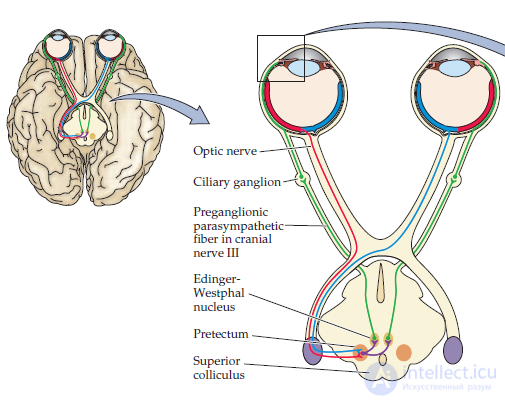
Fig. 4 Zones of the optic tract
So, up to the most visual cortex (striate or visual cortex) the information goes as it came out of the eye, and now something similar to the recognition of the relative position of signals begins in the cortex. For example, neurons were found that actively respond to the angle of inclination of the rectangle presented (Fig. 5), to its length, direction of displacement, and other simple image attributes. Moreover, the organization of such neurons is not random, but very consistent and logical (Fig. 6) and makes up, as it were, a map of alternating layers. The result is that the visual cortex consists of repeating modules that can evaluate a specific area of the field of view on a set of properties. And such a structure can be found in almost all areas of the cortex (not only visual, but also auditory and sensory). In addition, there is an additional separation of paths from the lateral geniculate nucleus (LGN) to the visual cortex based on two types of LGN neurons (M ganglion cells and P ganglion cells). These two types of neurons have a different size of the sensitive area (dendrites are longer in M cells) and the speed of information transfer, as a result of which M cells react more strongly to fast stimuli, and R cells to slow ones, plus to this R cells can transmit information about color, and M is not. The significance of these two paths is as follows: damage to M cells leads to a decrease in the ability to respond to a rapid change in the situation without affecting the ability to see in color, while damage to P cells significantly affects the quality of vision, but does not affect the response to fast stimuli. There is a third way - through K cells, which mainly transmit information about shortwave stimuli, but less is known about its role.
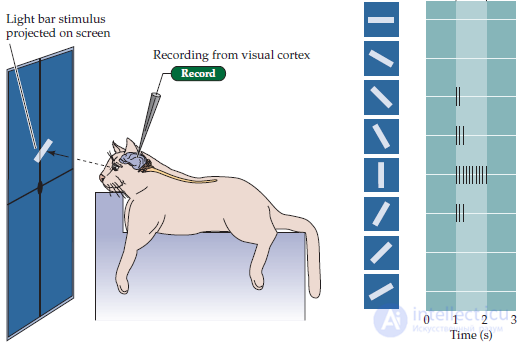
Fig. 5. The response of neurons in the visual cortex, depending on the image tilt.
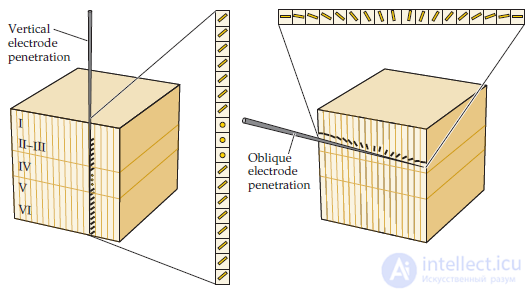
Fig. 6. The spatial organization of neurons in the visual cortex, responding to certain stimuli.
Further, the information enters the following areas of the visual cortex (Fig. 7), where on-zone partial reorganization and integration of the obtained information takes place: for example, in the V4 zone, neurons respond to color regardless of movement or direction, and in the MT zone (middle temporal area) - In contrast, neurons respond exclusively to the direction of movement of an object’s edge, regardless of its color.
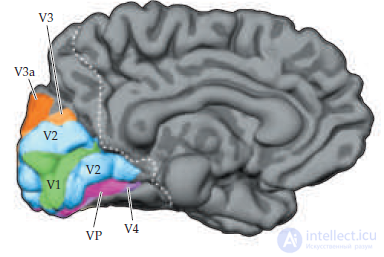
Fig. 7. Zones of the visual cortex.
Damage to such areas leads to specific sensations in patients. For example, damage in the MT zone leads to “motor blindness” - the inability to see the movement: the patient described the tea flowing from the teapot as frozen. That is, before the MT, neurons fully process the complete image and the person, generally speaking, sees the entire field of view, but the integration of the motor information into the overall picture does not occur and it is lost from conscious perception. An interesting point is that unconsciously such information can still be processed. There are cases when, due to a stroke in the high-level areas of the visual cortex, a person is actually blind, but at the same time moving around the room, he rather successfully walked around objects. This happened because although the path to conscious processing of information was damaged, the connections between the motor and visual areas were not affected and the person made the right decisions reflexively, although he could not explain them.
It is in such an intricate way that information reaches the brain and is processed by it. And there are more questions than answers, of course, but I hope I managed to shed some light on the brain’s work and the principles of processing and integrating information.
UPD: forgot links
[1] Intelligence: Knowns and unknowns, Neisser et al., American Psychologist, 1996, 51 (2), 77–101.
[2] Distributed neural system for general intelligence, Glascher et al., PNAS, 2010, 107: 10, 4705-4709.
[3] The Parieto-Frontal Integration Theory (P-FIT) of intelligence: Converging neuroimaging evidence, Jung et al., Behavioral and Brain Sciences, 2007, 30, 135-187.
[4] Neural mechanisms of color vision, De Valois et al., Comprehensive Physiology, 2011, 425-456.







Comments
To leave a comment
Models and research methods
Terms: Models and research methods